1990 - 1994
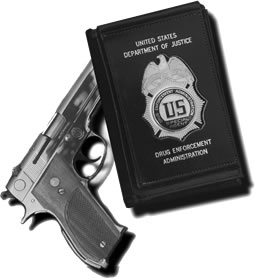
President George Bush
began to immediately focus national efforts on a comprehensive drug enforcement
strategy that targeted both supply and demand reduction.
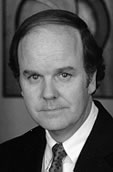 DEA DEA
Robert C. Bonner
August 16, 1990 -
October 31, 1993
When John Lawn retired on March 23, 1990, Terrance
M. Burke, a career DEA agent, was named Acting Administrator.
On May 11,
1990,
President George Bush nominated Robert C. Bonner, a Federal Judge
and United States Attorney from Los Angeles, as Administrator.
He was confirmed by the Senate on July 27, 1990 and sworn in as
the DEA’s fifth Administrator on August 13, 1990.
In prior years, Mr. Bonner was the United States Attorney for
the Central District of California (1984-1989) and Federal Judge,
United States District Court for the Central District of California
(1989-1990). He had worked closely with the DEA on two record-breaking
money laundering cases, Operations Pisces and Polar Cap, and had
led the prosecution team against the killers of DEA Special Agent
Camarena. Judge Bonner understood that the drug trade was a global
enterprise, and because of this, federal drug law enforcement had
to target drug trafficking organizations overseas, as well as their
networks within our borders.
After leaving DEA, Mr. Bonner was a partner
in the Los Angeles and Washington, D.C., law firm Gibson, Dunn & Crutcher.
In September 2001, he was sworn in as Commissioner of the U.S.
Customs
Service, and in 2003, he became the first head of the Bureau of
Customs and Border Protection, a new agency under the Department
of Homeland Security.
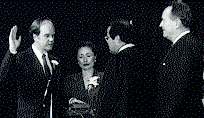 Robert
C. Bonner was sworn in as the DEA's Fifth
Administrator in August 1990. Attending the inaugural
ceremony at headquarters were (from left): Administrator
Bonner, Mrs. Bonner, Supreme Court Justice Antonin Scalia,
and Attorney General Dick Thornburgh. Robert
C. Bonner was sworn in as the DEA's Fifth
Administrator in August 1990. Attending the inaugural
ceremony at headquarters were (from left): Administrator
Bonner, Mrs. Bonner, Supreme Court Justice Antonin Scalia,
and Attorney General Dick Thornburgh.
|
DEA was called upon to work with its foreign counterparts to reduce
the supply of drugs in the country and reduce the demand through prevention,
education and treatment.
DEA Special Agents
1990.....3,191
1994.....3,418
DEA Budget
1990.....$769.2 million
1994.....$1,050 million |
| Year |
Foreign
Office Opened |
| 1990 |
Freeport, Bahamas |
| 1990 |
Rangoon, Burma |
| 1990 |
Udorn, Thailand |
| 1992 |
Belize, Belize |
| 1992 |
San Salvador, El Salvador |
During
the late 1980s and early 1990s, Americans considered the drug issue a
major concern, and public awareness about drug trafficking and drug abuse
increased significantly. The media had provided the American people with
critical information about the damage caused by drugs.
President George Bush began immediately to focus national efforts on a comprehensive drug
enforcement strategy that targeted both supply and demand reduction. On one hand, his strategy
called for the DEA and other federal agencies to work with our counterparts overseas and at
home to reduce the supply of drugs in the country. At the same time, complementary efforts
were directed at reducing the demand for drugs through prevention, education, and treatment,
including a comprehensive advertising program launched by the Partnership for a Drug-Free
America.
Cocaine
and crack remained the number one drug challenge facing law enforcement,
and the Colombian cartels and their cells were firmly entrenched in virtually
every U.S. city and in many countries around the globe. Both the Medellin
Cartel and the Cali mafia had a devastating impact on U.S. communities.
In the Northeast, especially the New York area, the Cali mafia had quietly
established a network of cells to carry out all of the mafia's various
tasks involving the shipment of cocaine, its storage, communications between
Colombia and the United States, and the return of profits to Colombia.
The Cali mafia sent armies of surrogates into the United States to ensure
that the cocaine business was run smoothly and profitably.
In 1992, the DEA instituted the Kingpin Strategy to attack the drug organizations at their most
vulnerable areas--the chemicals needed to process the drugs, their finances, transportation,
communications, and leadership infrastructure here in the United States. The Kingpin program
essentially controlled investigations from DEA headquarters and selected a finite number of
targets for intensive investigative activity.
Because extradition of Colombian nationals to the United States was prohibited by Colombia's
1991 constitution, it was essential that Colombian drug lords were arrested, prosecuted, and
incarcerated in their own country. With the help of law enforcement counterparts overseas and at
home, most notably the Colombian National Police (CNP), one by one the Medellin leaders were
toppled. By the time Pablo Escobar, the most notorious and murderous drug lord of the Medellin
Cartel, was killed by the CNP on a Colombian rooftop in 1993, the cartel had already been
severely damaged. But there would be no rest, because waiting to emerge on the world scene
was the Cali mafia, which over the years had been less visible, but no less formidable than its
Medellin counterpart.
Decline of the Medellin Cartel and the Rise of the Cali Mafia
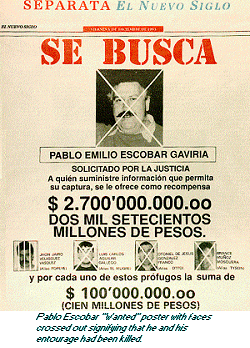 In the early 1990s the Medellin Cartel was waging a campaign
of terror and bribery to pressure the Colombian government to prohibit
the extradition of native Colombians. Pablo Escobar and several other
Medellin leaders, labeled "The Extraditables," took increasingly violent
measures to try to force the government to accept legislation that would
protect them from extradition. The cartel was responsible for the assassinations
of dozens of government officials, and the bribery of many more. When,
in July 1991, the Colombian congress adopted a new constitution that prohibited
the extradition of the Colombian natives, it was considered a major victory
for the Medellin Cartel. In the early 1990s the Medellin Cartel was waging a campaign
of terror and bribery to pressure the Colombian government to prohibit
the extradition of native Colombians. Pablo Escobar and several other
Medellin leaders, labeled "The Extraditables," took increasingly violent
measures to try to force the government to accept legislation that would
protect them from extradition. The cartel was responsible for the assassinations
of dozens of government officials, and the bribery of many more. When,
in July 1991, the Colombian congress adopted a new constitution that prohibited
the extradition of the Colombian natives, it was considered a major victory
for the Medellin Cartel.
However, the many law enforcement efforts to topple the Medellin cartel were resulting in
numerous surrenders and arrests that eventually led to the cartel's demise. For example, in
December 1990, cartel leader Fabio Ochoa surrendered to authorities near Medellin. Shortly,
after, in January 1991, Fabio Ochoa's brother, Jorge Luis, also turned himself into the CNP. The
brothers, along with Pablo Escobar, had been the top leaders of the cartel. Also, in January 1991,
the CNP killed David Ricardo Prisco Lopera, Pablo Escobar's top assassin, along with his
younger brother, Armando Alberto Prisco. The Priscos were wanted for ordering the murders of
50 Medellin police officers, for several terrorist bombings, and for nine assassinations, including
that of a Colombian Justice Minister in 1984. In February 1991, a third Ochoa brother, Juan
David surrendered.
Law enforcement efforts were increasingly directed at Pablo Escobar, the kingpin of the Medellin
cartel. In June 1991, Escobar surrendered to authorities, and was put in Envigado prison.
However, the Colombian government had agreed in Escobar's surrender negotiations that
security at Envigado prison would be the responsibility of Army guards and Escobar's own,
handpicked bodyguards. In reality, Envigado prison protected, rather than incarcerated him.
Escobar's period at the prison was considered his "Golden Age," during which time he ran his
drug empire without fear of being hunted by the Colombian Government or assassinated by his
rivals.
In July 1992, Escobar "escaped" from Envigado prison in order to avoid
being transferred to a Bogota jail after it was confirmed that Escobar
had ordered the murder of some 22 of his own drug mafia associates. One
or two of Escobar's victims were even tortured, killed, and buried on
the grounds of Envigado prison. Escobar clearly had prior warning of the
plan to transfer him to a more secure prison, and 28 guards were later
charged with aiding and abetting Escobar's "break out." For 17 months,
Escobar was the target of the largest manhunt in Colombian history. In
December 1993, the CNP killed Escobar in a fire fight at a private residence
in downtown Medellin. Escobar's death, along with the surrender and arrest
of the Ochoa brothers marked the decline of the Medellin cartel.
The Cali mafia had been formed in the early
1970s by Gilberto Rodriguez-Orejuela and Jose Santacruz-Londono, and rose
quietly alongside its violent rival, the Medellin Cartel. But while the
Medellin Cartel gained an international reputation for brutality and murder,
the Cali traffickers posed as legitimate businessmen. This unique criminal
enterprise initially involved itself in counterfeiting and kidnapping,
but gradually expanded into smuggling cocaine base from Peru and Bolivia
to Colombia for conversion into powder cocaine.
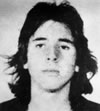
Fabio Ochoa-Vasquez |
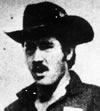
Juan Ochoa-Vasquez |
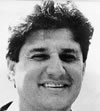
Jorge Ochoa-Vasquez |
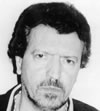
Miguel Rodriguez-Orejuela |
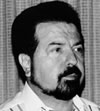
Gilberto Rodriguez-Orejuela |
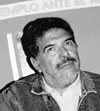
Jose Santacruz-Londono |
Up through the early 1990s, the Medellin Cartel had dominated the drug trade, but its reign of
relentless public terror against the Colombian government had driven Colombian authorities to
serious action that led to their ultimate defeat. By the early 1990s, the Medellin drug lords were
either killed or incarcerated. Having observed the fate of the brutal and violent Medellin Cartel,
the Cali leaders passed themselves off as law-abiding businessmen, investing in their country's
future, earning public respect, and taking economic control of the Cali region. Because they
operated in a less violent manner, the government did not aggressively pursue them, thereby
allowing the Cali mafia leaders to operate and grow in wealth and power with virtual impunity.
In the global arena, the cartels began expanding their markets to Europe. After the fall of the
Soviet Union in 1990, they quickly moved into Eastern Europe, taking advantage of the political
and economic chaos by using these newly-created democracies as the "backdoor" to transit their
cocaine to Western Europe. For example in 1992, large loads of cocaine were seized in
Czechoslovakia, Poland, and Hungary. In 1993, Russian authorities seized 1.1 tons of cocaine
hidden in cans of corned beef hash. This shipment originated in Cali, Colombia, and was
destined for the Netherlands, via St. Petersburg, Russia.
In the new, post-Cold War Europe, without border controls and an eastern border sealed against
communism, international businesses and world governments were threatened by the drug cartels
from Colombia.
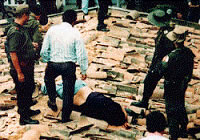
On December 2, 1993, Escobar's exact
location was determined using electronic, directional-finding equipment.
With authorities closing in, a fire fight with Escobar and his
bodyguard ensued. The two fugitives attempted to escape by running
across the roofs of adjoining houses to reach a back street, but
both were shot and killed by Colombian National Police.
|
In the early 1990s, the DEA estimated that they collectively produced and exported from
Colombia between 500 and 800 tons of cocaine a year. The organizations were structured and
operated much like major international corporations. They had enormous financial resources,
with which they could afford to buy the best legal minds, the most sophisticated technology, and
the most skilled financial experts.
Among the major Cali drug lords, the Rodriguez-Orejuela brothers--Gilberto and his younger
brother, Miguel--were known as the transportation specialists who moved cocaine out of
Colombia into the United States and other countries. Gilberto was responsible for the strategic,
long-term planning of the organization. Miguel was the hands-on manager who ran the day-to-day operations. Jose Santacruz-Londono was responsible for establishing distribution cells in
the United States.
These Cali leaders ran an incredibly sophisticated, highly-structured drug trafficking organization
that was tightly controlled by its leaders in Cali. Each day, details of loads and money shipments
were electronically dictated to heads of cocaine cells operating within the United States. The
Cali drug lords knew the how, when, and where of every cocaine shipment, down to the
markings on the packages. The Cali bosses set production targets for the cocaine they sold and
were intimately involved in every phase of the business--production, transportation, financing,
and communications.
Each organization had its own hierarchy of leaders, its own distribution networks, and customers
in nations around the world. The operations were divided into separate cells. Each cell was run
by a cell director--always a Colombian national--who reported directly to the drug lords in
Colombia. These organizations were truly international operations run with efficiency and geared
for huge profits. The massive scale of their trafficking operations dwarfed law enforcement
efforts in Colombia, in the United States, and in the transit nations between them.
Heroin
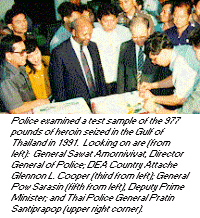 During the 1980s, worldwide illicit opium production
had doubled, with Southeast Asia then emerging as the major source of
the world's heroin supply. In Burma, self-styled rebels, like drug lord
Khun Sa, financed private armies and generated an estimated $200 million
gross profits per year from his heroin and opium enterprises. This wealth
made him so powerful that the Burmese government allowed him to operate
with impunity, and he controlled most of the Shan State of Burma. During the 1980s, worldwide illicit opium production
had doubled, with Southeast Asia then emerging as the major source of
the world's heroin supply. In Burma, self-styled rebels, like drug lord
Khun Sa, financed private armies and generated an estimated $200 million
gross profits per year from his heroin and opium enterprises. This wealth
made him so powerful that the Burmese government allowed him to operate
with impunity, and he controlled most of the Shan State of Burma.
In the early 1990s, the United States was faced with a resurgence of heroin. As the decade
progressed, the heroin became purer and cheaper than ever before in U.S. history. New
traffickers and new sources for the drug also contributed to the tide of heroin abuse.
In South America, the Colombian cocaine cartels were beginning
to diversify into the production and distribution of heroin. Colombian
heroin seizures in the United States began to rise. It was estimated that
the Colombian cartels had financed the cultivation of up to 25,000 hectares.
That made Colombia one of the largest cultivators of illicit opium, behind
Burma and Laos, but ahead of the traditional opium-producing nations,
such as Pakistan, Afghanistan and Lebanon. In February 1992, the first
heroin lab was seized and destroyed in Colombia, and in that year, the
Colombian National Police eradicated more than 10,000 hectares of opium
poppies.
More heroin was available in the United States than ever before, and
this drove prices down and purity up. The national average purity level
of an ounce of heroin being sold on U.S. streets was 66 percent in 1993,
compared to less than 5 percent in the early 1980s. In some cases, the
DEA seized heroin that was 95 percent pure. Aggressive international heroin
traffickers, such as those based in Nigeria, emerged to join the traditional
heroin trafficking organizations based in China, Turkey, and the Middle
East.
In 1991, DEA made the largest seizure of heroin in U.S. history when over 1,000 pounds of
Southeast Asian white heroin, with an estimated wholesale value of more than $1 billion, was
seized in San Francisco. Agents from San Francisco, Sacramento, and New York monitored a
controlled delivery of the heroin 24-hours-a-day for nearly a month prior to the arrest of five
suspects. The heroin was found in 59 of 1,360 cartons of plastic produce bags imported from
Taiwan. Each of the 59 cartons contained two cylinders of heroin coated in white wax or
wrapped in "happy birthday" paper. By 1993, Southeast Asian heroin, which was smuggled by
both China and Nigeria/West Africa-based traffickers, was one of the greatest threats to the
United States. At that time, roughly 68 percent of the heroin seized in the United States came
from Southeast Asia's Golden Triangle--Burma, Laos, and Thailand. China-based traffickers
controlled sophisticated international networks that smuggled multi-hundred kilo quantities of
heroin in commercial cargo on a regular basis.
Marijuana
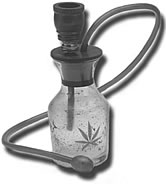 With the explosion in the use of crack, cocaine, and
heroin in the 1980s, public concern about marijuana was diminished, despite
the fact that marijuana continued to be the most commonly used illegal
drug in the United States. According to the 1991 National Household Survey
on Drug Abuse, 13 percent of young adults, age 18 to 25, were regular
users of marijuana. In addition, 4 percent of youth, age 12-17, and 10
percent of older adults, age 26 to 34, reported using marijuana regularly. With the explosion in the use of crack, cocaine, and
heroin in the 1980s, public concern about marijuana was diminished, despite
the fact that marijuana continued to be the most commonly used illegal
drug in the United States. According to the 1991 National Household Survey
on Drug Abuse, 13 percent of young adults, age 18 to 25, were regular
users of marijuana. In addition, 4 percent of youth, age 12-17, and 10
percent of older adults, age 26 to 34, reported using marijuana regularly.
The marijuana of the early 1990s was an entirely different drug from the version that was
available in the 1960s or 1970s. Due to modern sophisticated cultivation techniques, U.S.-grown
marijuana became one of the most potent and highly-prized cannabis products in the world.
While the THC (the psychoactive ingredient) content of marijuana averaged 1.5 percent in 1970,
by the 1990s it was 7.6 percent. The sinsemilla (seedless) variety ranged from 8 to 19 percent,
and marijuana seizures in Alaska registered a THC potency of almost 30 percent.
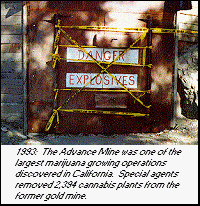 In addition, marijuana growers continued to encroach on national forests and parks and to
threaten the environment by using harmful pesticides. With the wholesale price of high-quality
sinsemilla averaging between $3,000 and $8,000 a pound, marijuana cultivation became big
business. It was estimated that domestically grown marijuana constituted 25 percent of the
supply for the United States. In addition, marijuana growers continued to encroach on national forests and parks and to
threaten the environment by using harmful pesticides. With the wholesale price of high-quality
sinsemilla averaging between $3,000 and $8,000 a pound, marijuana cultivation became big
business. It was estimated that domestically grown marijuana constituted 25 percent of the
supply for the United States.
In recognition of the growing threat from marijuana, by
the 1990s, all 50 states were actively participating in the Domestic Cannabis
Eradication and Suppression Program. With the marijuana market increasing,
the program looked for more efficient ways to eradicate the plant. Along
with the traditional "whack and stack" method, the DEA added herbicidal
eradication. One of the first herbicidal eradication efforts, Operation
Wipe Out in Hawaii, was an overwhelming success. In the summer of 1990,
almost 90 percent of Hawaii's cannabis crop was eradicated. Half of the
crop was destroyed by spot herbicidal spraying, a new and more efficient
eradication technique, which had little, if any, environmental impact.
Nationwide eradication efforts, such as Wipe Out, put so much pressure on growers that many
abandoned their outdoor cultivation on public and private land for the safety of indoor
cultivation. Indoor cultivated marijuana created new concerns for law enforcement; it was of
such high quality and potency that American marijuana became the most sought-after cannabis in
the world.
DEA Mini-Series
Network series lasted 6 episodes before being cancelled.
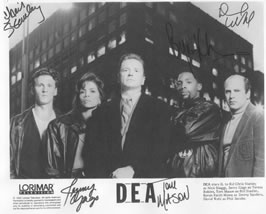
|
One of the most important enforcement tools that had developed during the late 1980s was
thermal imagery, which was used to identify indoor marijuana operations. With the availability
of this new heat-seeking technology, seizure records for indoor grows jumped from 951 in 1985
to 3,849 in 1992.
Throughout the early 1990s, the DEA closed down thousands of indoor marijuana grows. For
example, in August 1993 at the Advance Mine site in northern California, investigators found
sinsemilla plants, which ounce for ounce, could produce extremely high-grade marijuana. The
mine, which had been an operational gold mine during the late 1800s and the early 1900s,
contained everything needed to grow more than 3,000 marijuana plants. The 8-section complex
included five rooms for growing plants, and a pumping system that continually supplied water
and nutrients to the marijuana plants.
The total value of the plants found inside the mine was estimated to be between $6 and $9
million. Four people were arrested. It took 40 DEA, U.S. Forest Service, and county law
enforcement personnel two days to remove more than 5 tons of marijuana cultivation equipment
from inside the mine.
Steroids
In the 1980s and 1990s, abuse of steroids, particularly by young athletes, became a problem.
Trafficking in steroids had become increasingly common, and as the market expanded, use of
steroids was seen in younger and younger populations. Steroid sources included doctors,
trainers, and foreign suppliers. A Government Accounting Office (GAO) study of the problem,
published in 1989, reviewed 15 separate studies and reported one which showed that more than
six percent of male high school seniors, mostly athletes, used or had used steroids. Another
survey indicated that 20 percent of athletes in five colleges surveyed used steroids. It also
reported on the significant side effects of steroid use. The GAO supported federal and state
efforts to exercise greater control over steroid distribution and use. A 1990 study by the
Inspector General of Health and Human Services reported that over a quarter of a million
adolescents used steroids.
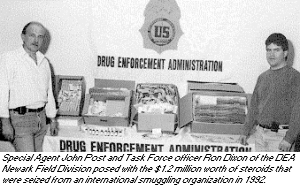 Congress responded to the steroid problem by passing
The Anabolic Steroid Enforcement Act of 1990, which placed certain anabolic
steroids in Schedule III of the Controlled Substances Act (CSA). Previously,
steroids had been unscheduled and controlled only by state and local laws.
The Anabolic Steroid Enforcement Act brought anabolic steroids under the
record-keeping, reporting, security, prescribing, import and export controls
of the CSA. Because steroids were now classified as a Schedule III substance,
all manufacturers and distributors of steroids were required to register
with the DEA. Congress responded to the steroid problem by passing
The Anabolic Steroid Enforcement Act of 1990, which placed certain anabolic
steroids in Schedule III of the Controlled Substances Act (CSA). Previously,
steroids had been unscheduled and controlled only by state and local laws.
The Anabolic Steroid Enforcement Act brought anabolic steroids under the
record-keeping, reporting, security, prescribing, import and export controls
of the CSA. Because steroids were now classified as a Schedule III substance,
all manufacturers and distributors of steroids were required to register
with the DEA.
This legislation, combined with an aggressive enforcement effort, virtually eliminated domestic
sources of illicit steroid use and provided the legal authority to attack the smuggling of steroids
from foreign sources. In order to heighten international awareness of the steroid problem, the
DEA sponsored an international conference which was attended by nations where steroids were
produced, as well as nations concerned with steroid abuse. This conference was also attended by
scientific experts in the field of steroids and representatives of the U.S. and the International
Olympic Committees.
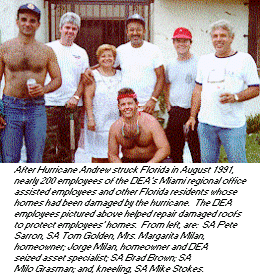
Operation Man (1990)
Through the 1980s and early 1990s, the forfeiture of traffickers' assets became an important and
effective tool for law enforcement. In 1991, President Bush signed a bill expanding the the
DEA's authority to administratively forfeit assets from $100,000 to an unlimited amount with
respect to financial instruments, including cash, CD's and bonds; and $100,000 to $500,000 on
all other items except real estate. One of the DEA's most successful financial cases was
Operation Man, where agents tracked and forfeited drug assets laundered through banks based in
the British Isle of Man, off the West Coast of England. Assets seized from this operation
included a $9.5 million bank account and the Bicycle Club, a gambling establishment in Bell
Gardens, California, valued at $150 million. In April 1990, after a club partner was convicted of
smuggling marijuana, the U.S. Government seized the club, believed to be the world's largest
card casino, assumed 30 percent ownership in the club, and received almost $600,000 a month in
profits.
Operation REDRUM (1991)
The REDRUM (murder spelled backwards) program had been established in 1985 to create a
multi-agency operational force to pursue investigations that demonstrated an association between
drug trafficking and the violence that it fostered. The primary goals of the program were the
identification of major drug traffickers and organizations; the seizure of drugs and assets; and the
analysis of strategic intelligence provided by informants.
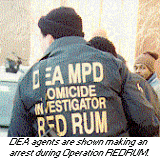 On January 1, 1991, a Metropolitan Area Drug
Enforcement Task Force (MATF), was formed as a pilot project under Operation
REDRUM and addressed the influx of illegal drugs and accompanying violence
associated with drug trafficking in Northern Virginia, Washington, D.C.,
and the contiguous suburban Maryland counties. The MATF was divided into
several operational units designed to focus on different aspects of the
drug problem. This 90-day project investigated individuals based in New
York City who were responsible for drug-related homicides in the Washington,
D.C., area. In addition to 15 state and local agencies working to reduce
violent drug-related crime, participating federal agencies included the
DEA, FBI, INS, and the Marshals Service. According to Attorney General
Richard Thornburgh in April 1991, "The urgency of the nation's war on
drugs has intensified the need for information on innovative programs
and approaches to counter illicit drug trafficking and its related violence.
This project will test and evaluate a promising cooperative enforcement
initiative that can be replicated by state and local law enforcement agencies
nationwide." On January 1, 1991, a Metropolitan Area Drug
Enforcement Task Force (MATF), was formed as a pilot project under Operation
REDRUM and addressed the influx of illegal drugs and accompanying violence
associated with drug trafficking in Northern Virginia, Washington, D.C.,
and the contiguous suburban Maryland counties. The MATF was divided into
several operational units designed to focus on different aspects of the
drug problem. This 90-day project investigated individuals based in New
York City who were responsible for drug-related homicides in the Washington,
D.C., area. In addition to 15 state and local agencies working to reduce
violent drug-related crime, participating federal agencies included the
DEA, FBI, INS, and the Marshals Service. According to Attorney General
Richard Thornburgh in April 1991, "The urgency of the nation's war on
drugs has intensified the need for information on innovative programs
and approaches to counter illicit drug trafficking and its related violence.
This project will test and evaluate a promising cooperative enforcement
initiative that can be replicated by state and local law enforcement agencies
nationwide."
Because of the success of this operation and other REDRUM pilot projects, Administrator
Bonner in April 1992 expanded Operation REDRUM to include drug-related homicide
investigative units or task forces in Chicago, Detroit, Houston, Los Angeles, and New Orleans.
REDRUM, based in DEA headquarters, provided the divisional task forces with the funding for
their investigations. In 1990, the program was initially funded with $48,000, and during the
ensuing years the funds increased to a high in 1993 of $189,000.
LSD Conference (1991)
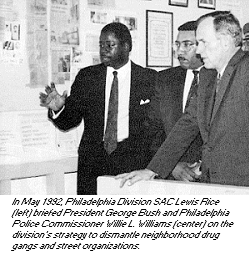 The early 1990s saw a resurgence of the popular 1960s
and 1970s drug, LSD. While the use of most other illegal drugs had declined,
LSD use was on the rise and was particularly popular among teenagers,
as evidenced by rising emergency-room mentions for LSD as well as LSD-related
arrests and violence. For example in 1991, LSD led to violence in Fairfax
County, Virginia, where a high school student who allegedly had taken
six or more hits of LSD shot a police officer, wounding her seriously.
In San Marcos, Texas, a college student used a rifle to kill two acquaintances
and wound his girlfriend after taking several hits of LSD. The early 1990s saw a resurgence of the popular 1960s
and 1970s drug, LSD. While the use of most other illegal drugs had declined,
LSD use was on the rise and was particularly popular among teenagers,
as evidenced by rising emergency-room mentions for LSD as well as LSD-related
arrests and violence. For example in 1991, LSD led to violence in Fairfax
County, Virginia, where a high school student who allegedly had taken
six or more hits of LSD shot a police officer, wounding her seriously.
In San Marcos, Texas, a college student used a rifle to kill two acquaintances
and wound his girlfriend after taking several hits of LSD.
To call attention to increasing abuse of the drug and to emphasize the need for stronger
cooperative law enforcement and a commitment to reduce demand, Administrator Bonner held
an LSD Conference in San Francisco in December 1991. This conference was held in California
because it was a major source for LSD production and was attended by demand reduction experts
from across the nation as well as law enforcement representatives from local, state, and federal
levels.
Medical Use of Marijuana Denied
(1992)
In 1989, former Administrator Lawn had officially denied the petition of the National
Organization for Reform of Marijuana Laws (NORML) to reschedule marijuana from Schedule I
to Schedule II of the Controlled Substances Act. When NORML appealed that decision,
Administrator Bonner had to review the issue and assess whether or not marijuana had any
medicinal value. In order to develop a concrete, objective means of determining if marijuana
should be rescheduled, Administrator Bonner relied on a five-point test, based somewhat on the
criteria Congress had used to decide if certain drugs should be rescheduled. If the drug failed to
meet just one of the five criteria, it could not be rescheduled, asserted Administrator Bonner.
Marijuana failed to meet all five. The criteria consisted of:
1. The drug's chemistry must be known and reproducible.
2. Adequate safety studies must have been performed on the drug.
3. There must have been adequate and well-controlled studies proving the drug's efficacy.
4. The drug's medicinal value must be accepted by qualified experts.
5. The scientific evidence of the drug's safety and efficacy must be widely available.
Judge Bonner ruled that marijuana had no currently accepted medical use on March 26, 1992.
DEA Special Agent Promotion Program
In 1992, the DEA implemented the Special Agent Promotion Program (SAP), a bias-free
system for testing and promoting its special agents. It was based upon an objective
identification of the most qualified candidates, regardless of their race or
gender. The SAP resulted in important gains for female employees, in addition
to African-American and Hispanic
employees.
Operation Green Ice (1992)
By the late 1980s, the DEA's financial investigative skills had evolved to such a high degree that
the agency set up its own bank to lure drug traffickers looking to launder their profits. In 1989,
the investigative team created Trans America Ventures Associates (TARA) and established its
credentials in the financial community. The result was so convincing that Hispanic Business
Weekly listed TARA as one of the top 500 Hispanic Corporations in America. Undercover agents
then posed as money launderers and offered to pick up funds anywhere in the world. They used
informants to identify drug money brokers from Colombia who acted as middlemen between
Cali mafia kingpins and money laundering operations in the United States.
Beginning in San Diego and Los Angeles, the investigations took undercover agents to Houston,
Ft. Lauderdale, Miami, Chicago, and New York to pick up money and to establish "fronts," such
as leather goods shops, in these cities. During the course of the investigation, DEA agents
laundered more than $20 million for the Colombia-based cartels. As the investigation developed,
cartel operatives asked the undercover agents to provide money laundering services in Europe,
Canada, and the Caribbean. Consequently, Operation Green Ice was expanded into a coordinated
international law enforcement effort involving Canada, the Cayman Islands, Colombia, Costa
Rica, Italy, Spain, the United Kingdom, and the United States.
In September 1992, undercover agents finally arranged a meeting with top-ranking Cali financial
managers at locations in the United States, Italy, Spain, and Costa Rica. The drug lords arrived,
expecting to discuss plans for their criminal business, but instead were arrested. Operation Green
Ice was an unprecedented collaboration of talent and financial expertise that successfully formed
the first international task force to attack the monetary networks of the Cali mafia. Operation
Green Ice led to the arrest of seven of the Cali maifa's top financial managers, the seizure of
more than $50 million in assets worldwide, and the arrest of 177 persons, including 44 in the
United States.
Major Cocaine Seizure (1992)
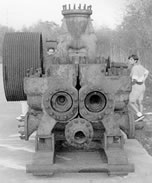
In 1992, 500 pounds of cocaine belonging to the Cali mafia were found
by DEA agents in a Texas oil field mud pump. |
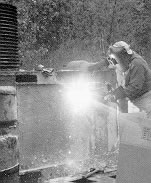
A welder used a high-tech torch to cut through the bottom plate of
the pump to remove cocaine packages. |
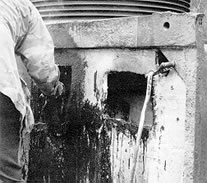
The packages had been covered in red grease to conceal the scent
from drug-sniffing dogs. |
Creation of the Intelligence Division (1992)
For most of its first 20 years, the DEA's headquarters intelligence function and responsibility for
managing DEA's intelligence program was located in the Operations Division. The DEA was
responsible for managing a National Narcotics Intelligence System with federal, state, local, and
foreign officials, and coordinating the collection, analysis, and dissemination of drug
intelligence. However, as drug trafficking around the world increased and more law
enforcement, intelligence, and military entities joined in the anti-drug effort, it became clear that
the DEA had to focus additional resources and attention on drug intelligence. In August 1992,
the Office of Intelligence became the Intelligence Division. The primary purposes of the change
in status was to bring together all intelligence functions within the DEA, enhance the profile of
the DEA's entire intelligence program, place increased emphasis on the DEA's intelligence
mission, and improve the span of control of senior management.
Federal drug efforts and the demands of the law enforcement, intelligence, and defense
communities were growing at a rapid and sometimes uncoordinated manner. Their demands on
the DEA intelligence program were increasing dramatically at a time when the DEA was barely
able to meet its own intelligence needs. The information collected by DEA special agents around
the world constitutes one of the richest sources of federal drug information. Programs needed to
be established to ensure that the information was properly shared and that other agencies
dedicated and focused resources to add to that information for law enforcement purposes. More
and better analysis had to be conducted in order to provide the details that could link apparently
unrelated cases and support the development of successful prosecutions.
By establishing the Intelligence Division, the DEA sought to achieve a uniformity of purpose
among federal drug intelligence efforts, establish intelligence program and policy functions, and
provide a more proactive direction for DEA's intelligence program. Intelligence management
resources were expanded to ensure that the intelligence programs of the interagency drug
community were addressing the tactical, operational, and strategic needs of the DEA.
The Intelligence Division included three entities: the El Paso Intelligence Center (EPIC), the
Office of Investigative Support, and the Office of Intelligence Policy and Liaison. EPIC
continued to expand its support to law enforcement officers across the country with its Pipeline
and Jetway Programs, and the timely provision of information from the Watch. The Office of
Investigative Support, collocated with its enforcement counterparts, provided intelligence support
to the Kingpin Strategy. Functions of the Office of Intelligence Policy and Liaison included:
establishing programs and policies to ensure support from the interagency community; strategic
intelligence; planning, policy analysis, and program development; and, the Special Field
Intelligence Program (SFIP). Although a separate entity, the functions and programs of the
Intelligence Division remained focused on supporting DEA's enforcement mission.
The Kingpin Strategy (1992)
In 1992, the DEA instituted the Kingpin Strategy that focused investigative and enforcement
efforts on specific drug trafficking organizations. The DEA planned to disable major
organizations by attacking their most vulnerable areas--the chemicals needed to process the
drugs, their finances, communications, transportation, and leadership structure.
The Kingpin Strategy held that the greatest impact on the drug trade took place when major drug
organizations were disrupted, weakened, and destroyed. This strategy focused enforcement
efforts and resources against the highest-level traffickers and their organizations, and provided a
systematic way of attacking the various vulnerabilities of the organizations. By systematically
attacking each of these vulnerabilities, the strategy aimed to destroy the entire organization, and
with it, the organization's capacity to finance, produce, and distribute massive amounts of illegal
drugs. Each blow weakened the organization and improved the prospects for arresting and
prosecuting the leaders and managers of the organizations.
The Kingpin Strategy evolved from the DEA's domestic and overseas intelligence gathering and
investigations. It was a strategy that encompassed the DEA's enforcement actions in the United
States, in the transit nations of the Caribbean, Mexico and Central America, and in the source
countries of the Andes. The DEA also expanded Operation BAT in the Caribbean to include
Jamaica, the Dominican Republic, and the Lesser Antilles.
Eventually, the Kingpin Strategy would be revised, although the DEA retained the emphasis on
going after the top level of the international drug trade. When Mr. Constantine became the
Administrator, the SACs of DEA field divisions requested greater flexibility within their areas of
command to target the major drug trafficking figures who were having a significant impact in
their regions. Under the original Kingpin Strategy, DEA headquarters often dictated the selection
of Kingpin targets. In response to the SACs' concerns, Administrator Constantine agreed to
allow them more latitude in target selection. In conjuction with this decision, he established the
Special Operations Division at Newington, Virginia, in 1994 to coordinate multi-jurisdictional
investigations against major drug trafficking organizations responsible for the flow of drugs into
the United States.
In November 1991, the DEA destroyed two major distribution cells of Cali Kingpin Helmer
"Pacho" Herrera in New York City. Herrera was the primary supplier of cocaine to the New York
market, and his organization was shut down through a massive wiretap effort, using as many as
100 simultaneous, court-authorized wiretaps on cellular phones. Almost 100 traffickers were
arrested, more than $20 million in cash and assets were seized, and 2.7 tons of cocaine were
taken off the streets. In addition, computerized records of transactions and personnel were seized,
providing valuable insight into the Cali distribution cell operations and was an indication that the
Cali drug lords were becoming more dependent on computer systems.
In November and December 1991, the DEA teamed up with the CNP to carry out the first major
raids ever against Cali mafia in Cali, Colombia. As a result, the DEA seized important financial
records that permitted it to freeze trafficker bank accounts in Colombia, Miami, and London. In
addition, during one of these successful raids, the CNP arrested Ivan Urdinola, one of the most
violent of the Cali kingpins.
At the close of 1991, collective law enforcement efforts
against the cartels resulted in the seizure of more than 300 metric tons
of cocaine worldwide. Almost two-thirds of this amount was seized in the
Andes and the transit nations, such as Mexico and Guatemala.
In another investigation, the DEA, working with the U.S.
Customs Service, exposed one of the Cali mafia's principal means of smuggling
cocaine into the United States. In December of 1991, more than 15 tons
of cocaine hidden in cement fence posts were seized in Miami and Texas
and five Cali distributors based in the U.S. were arrested. The posts
were shipped from Venezuela.
As a follow-up to that investigation, the DEA and the U.S. Customs Service seized 7.5 tons of
cocaine concealed in shipments of broccoli and okra. Ten members of the organization were
arrested in Miami, Florida, including one of the Cali mafia's top managers in the United States.
Federal agents also seized $1.6 million in cartel bank accounts located in Florida, California,
New York, and New Jersey.
Finally, in July 1992, Panamanian police and the DEA raided a warehouse in Panama and seized
5.3 tons of cocaine concealed in boxes of hollowed-out ceramic tiles.
Brooklyn Clandestine Cocaine Lab Seizures (1992)
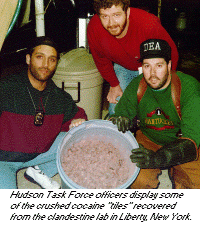 The Mid-Hudson Drug Enforcement Task Force, which consisted
of three DEA special agents, six New York state troopers, and seven local
police officers, conducted an intensive investigation of the Jose Santa
Cruz- Londono trafficking organization.The cooperative, year-long operation
required multiple wiretaps and sophisticated video surveillance, which
was installed inside the warehouse lab and captured several individuals
actually going through the cocaine processing procedures. These efforts
came to fruition on June 15, 1992, when the Task Force seized two major
clandestine cocaine laboratories in Brooklyn, New York. Agents found 100
pounds of cocaine base chemically altered into ceramic floor tiles for
smuggling into the United States. It was believed that each lab was capable
of producing 50 to 100 kilograms of cocaine HCl a day, making them two
of the largest labs seized during that time period. Unique to these labs
was the use of Dupont gun-cleaning solvent in the extraction process as
well as the use of an "extractor," a piece of equipment that used dry
ice to condense vapors in the laboratory. This device enabled the lab
to function in a densely populated area without the presence of strong
chemical odors usually associated with clandestine labs. The other lab
had been abandoned following an unrelated New York City Police raid of
a nearby building. As a result of these seizures, an additional 70 pounds
of cocaine were seized on March 3, 1993, when one of the cooperating Brooklyn
lab defendants led the task force to a crack cocaine laboratory located
in Liberty, New York. In addition, the chemist responsible for the tile
method of smuggling was arrested, and one of the Brooklyn arrestees was
later charged in the conspiracy to kill an editor of El Diario,
a Spanish-language newspaper published in New York City. The drug lords
from Colombia had threatened the editor's life when the newspaper ran
several articles condemning their activities. At the conclusion of these
investigations, the labs were traced to the Jose Santa Cruz-Londono trafficking
organization and 30 of its members were brought to justice. The Mid-Hudson Drug Enforcement Task Force, which consisted
of three DEA special agents, six New York state troopers, and seven local
police officers, conducted an intensive investigation of the Jose Santa
Cruz- Londono trafficking organization.The cooperative, year-long operation
required multiple wiretaps and sophisticated video surveillance, which
was installed inside the warehouse lab and captured several individuals
actually going through the cocaine processing procedures. These efforts
came to fruition on June 15, 1992, when the Task Force seized two major
clandestine cocaine laboratories in Brooklyn, New York. Agents found 100
pounds of cocaine base chemically altered into ceramic floor tiles for
smuggling into the United States. It was believed that each lab was capable
of producing 50 to 100 kilograms of cocaine HCl a day, making them two
of the largest labs seized during that time period. Unique to these labs
was the use of Dupont gun-cleaning solvent in the extraction process as
well as the use of an "extractor," a piece of equipment that used dry
ice to condense vapors in the laboratory. This device enabled the lab
to function in a densely populated area without the presence of strong
chemical odors usually associated with clandestine labs. The other lab
had been abandoned following an unrelated New York City Police raid of
a nearby building. As a result of these seizures, an additional 70 pounds
of cocaine were seized on March 3, 1993, when one of the cooperating Brooklyn
lab defendants led the task force to a crack cocaine laboratory located
in Liberty, New York. In addition, the chemist responsible for the tile
method of smuggling was arrested, and one of the Brooklyn arrestees was
later charged in the conspiracy to kill an editor of El Diario,
a Spanish-language newspaper published in New York City. The drug lords
from Colombia had threatened the editor's life when the newspaper ran
several articles condemning their activities. At the conclusion of these
investigations, the labs were traced to the Jose Santa Cruz-Londono trafficking
organization and 30 of its members were brought to justice.
The Tucker

Special Agent Claude Powers of the San Diego Division Narcotics Task
Force posed with the 1948 Tucker automobile seized from a major
methamphetamine
trafficker in 1992.
Rules of the Game (1993)
For years after the DEA first began operating in Mexico in the early 1970s, special agents
worked there, as in most countries of the world, without formal regulations other than their own
agency's guidelines. This changed in April 1990, when a physician, Dr. Humberto Alvarez
Machain, was kidnaped in Guadalajara by four men who identified themselves as members of the
Mexican Judicial Police. Machain was then driven to a neighboring state, held overnight in a
hotel, and forced to board a plane that took him to United States.
U.S. authorities maintained that the Guadalajara gynecologist
had injected DEA Special Agent Enrique Camarena with stimulants to keep
him conscious during the final interrogation before his murder in 1985,
and they were frustrated by Mexico's failure to arrest Machain after his
earlier indictment in Los Angeles. As a result, American officials paid
Mexican bounty hunters to kidnap Machain and take him to El Paso, Texas.
This fact aroused Mexican furor, and even more so when the United States
Supreme Court ruled in June 1992 that the abduction did not violate American
law. In 1992, the Government of Mexico imposed the first written regulations
that the DEA had faced anywhere in the world. The rules capped the number
of DEA agents in Mexico, designated a half-dozen cities in which they
must live, prohibited them from traveling without written Government of
Mexico permission, denied them diplomatic immunity from prosecution, and
stipulated that all useful intelligence information "must be immediately
transmitted to the competent Mexican authorities." They also prohibited
weapons. Dr. Machain was ultimately released in December 1992 due to a
directed verdict of acquittal.
Aviation
In late 1991, the Chief Pilot position was moved out of headquarters and sent
to Addison to run operations. By this time, the DEA’s Aviation Section
had grown to 115 special agent/pilots, 110 DEA-owned aircraft, 152 contractor
maintenance technicians, and an operating budget of $23 million. In the 1990s,
about 85 percent of the air fleet was from asset forfeiture and the remainder
was from military surplus and newly-purchased aircraft.
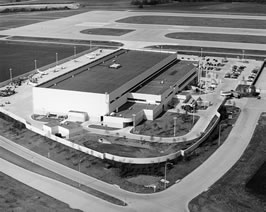 In June 1992, ground was broken for the new Aviation Operation Center at the
Alliance Airport, which was four times larger than the facility at Addison.
The three-story hanger included large bays with an overhead crane for working
on every kind of aircraft from small fixed-wing, single-engine planes, to large
turbine-powered transports and helicopters. The facilities provided for machine
repairs, engine shops, avionics, spare parts, modification work, metal work,
and hydraulic repairs. In June 1992, ground was broken for the new Aviation Operation Center at the
Alliance Airport, which was four times larger than the facility at Addison.
The three-story hanger included large bays with an overhead crane for working
on every kind of aircraft from small fixed-wing, single-engine planes, to large
turbine-powered transports and helicopters. The facilities provided for machine
repairs, engine shops, avionics, spare parts, modification work, metal work,
and hydraulic repairs.
Air intelligence, photo labs, maintenance, and the operations center and office
space were also housed in the new facility. In the connected two-story office
building were workstations, training rooms, conference areas, and computer
systems.
Training
When Administrator Robert C. Bonner began his tenure in August 1990, one of
the first challenges facing him was the issue of overcrowding at the FBI Training
Center at Quantico, Virginia. The training needs of the FBI had grown to such
an extent that there was literally no space to accommodate the DEA training
functions that were likewise expanding. As a result, the DEA was given notice
to find another place to conduct its training.
The Federal Law Enforcement Training Center in Glynco, Georgia, offered to
provide the DEA some space, but after evaluating a number of facilities in
other states, Administrator Bonner determined that it was in the DEA's interest
to retain a training facility at Quantico, Virginia. Mr. Bonner confirmed the
U.S. Marine Corps' offer of land to the DEA, and set about to acquire the funding
for a DEA training center.
In 1992, with the approval of Attorney General Dick Thornburgh, Administrator
Bonner was successful in obtaining $7 million for architectural plans and an
engineering study. However, it was not until FY 1997 that sufficient funds
were appropriated to build and complete the DEA Training Center at Quantico.
Office of Investigative Agency Policies (1993)
On November 18, 1993, the Attorney General established the Office of Investigative Agency
Policies (OIAP) at the Department of Justice. This new office, reporting directly to the Attorney
General, was created to increase efficiency within the Department of Justice by coordinating
specified activities of the department's criminal investigative components that warrant uniform
treatment or coordination. Agencies that fell under this program included the DEA, FBI, U.S.
Marshals Service, and Immigration and Naturalization Service. Some resolutions/issues
addressed by this office that affected the DEA included drug intelligence (February 1994),
wireless communications (April 1994), criminal investigations overseas (May 1994), aviation
policy (September 1994), armor piercing ammunition (October 1994), Interagency Laboratory
Working Group (June 1995), post-shooting incidents (October 1995), law enforcement training
(December 1995), and confidential informants and cooperating witnesses (May 1996).
Technology
Given the evolving sophistication of criminal drug organizations around the world in the 1990s,
the DEA was challenged to keep pace, particularly technologically. With the cartels' extensive
wealth, these international criminal organizations purchased the latest and most sophisticated
state-of-the-art technological equipment, and used this equipment to control every phase of their
drug business--production, transportation, financing and communications. Technology
provided them with the vital link to their managers and dealers here in the United States and
around the world, allowing the mafia leaders to maintain total control over every detail of the
drug business from their safe havens abroad.
Cellular Phones: Mafia leader surrogates who controlled operations in the United States
engaged in complicated efforts to avoid having their telephone communications vulnerable to
legal wiretaps. These criminal surrogates within the United States bought cell phones in lots of
10-20, which were used for a few weeks or even days and then quickly discarded and replaced.
This was done in order to evade wiretaps by moving from phone to phone more quickly than law
enforcement could keep up.
Digital Pagers: The use of digital pagers also created new problems. Traffickers sent messages,
often in code, to set up deliveries, cancel meetings, or warn of problems. But law enforcement's
ability to intercept these transmissions was limited. The DEA's primary method was to use a
clone of a pager used by a suspected trafficker. However in order to set up the clone, specific
information was needed from the company providing the paging service, and the suspect was
often tipped by the paging service that he was under investigation. In response and with the
cooperation of the cellular and paging industries, the DEA developed equipment to intercept
cellular and paging services.
Debit Telephone Cards: Traffickers also used debit cards to avoid detection by law
enforcement. From stores, such as the 7-11, traffickers bought telephone debit cards similar to
telephone credit cards that are not billed to any specific person or telephone number and are
difficult to trace.
Encryption: Encrypted communications became a major problem for law enforcement in the
1990s. To help counter the threat of criminal organizations exchanging encrypted messages with
impunity, Congress approved the Communications Assistance for Law Enforcement Act in 1994.
It required telephone companies to ensure that their systems and networks had the capability to
accommodate federal, state, and local law enforcement agencies' court-approved intercepts as
new technology was developed.
Digital Communications: Another important technological development occurred in the 1990s
when new carriers, such as cable television companies and electric companies, entered the
"telephone business." Where once a pair of wires carried only one analogue signal conversation,
today's communications were sent in pulses of digital information over wires or fiber optic
cables, allowing for multiple, simultaneous voice and data transmissions, known as multiplexing.
This meant that telephone calls were forwarded to a different location without detection by law
enforcement intercept equipment. As a result, Congress passed the Digital Telephony and
Communications Privacy Act of 1994, requiring the telecommunications industry to cooperate
with law enforcement in isolating information pertaining to the defendant and to exclude
information of other subscribers; therefore, the balance between privacy and public safety was re-established.
Laboratories
The laboratory system marked its 25th anniversary in August 1993. From
the original staff of 6 chemists at the Washington, D.C., BNDD laboratory,
the authorized staff had grown to a nationwide staff of 159 bench chemists,
12 latent fingerprint specialists, 36 laboratory managers and supervisors,
4 headquarters upper managers, 12 headquarters program managers, 2 hazardous
waste specialists, 2 diversion investigators, and numerous support personnel.
Killed in the Line of Duty
|
 |
Joseph T. Aversa
Died on March 5,
1990
Criminal Investigator
Aversa of the New
York State Police
was shot to death on
March 5, 1990, while
serving on the New
York Drug
Enforcement Task
Force.
|
 |
George D. Althouse
Died on May 28,
1992
DEA Special Agent
Althouse was killed
during an attempted
car theft in Shelby
County, Alabama. |
 |
Wallie Howard, Jr.
Died on October 30,
1990
Police Investigator
Howard of the New
York Police
Department was shot
and killed during an
undercover operation
with the Central New
York Drug
Enforcement Task
Force. |
 |
Becky L. Dwojeski
Died on October 21,
1993
DEA Special Agent
Dwojeski, who was
assigned to the Office
of Training, was
killed in an
automobile accident
on the Quantico
Marine Corps Base,
Quantico,
Virginia.
|
 |
Eugene T. McCarthy
Died on February 2,
1991
DEA Special Agent
Pilot McCarthy was
on a second Snowcap
tour in November
1990 when he was
called to active duty
in the Persian Gulf
War. He was killed
in a helicopter
accident in Saudi
Arabia during the
Persian Gulf
War.
|
 |
Stephen J. Strehl
Died on November
19, 1993
Detective Strehl, a St.
Louis, Missouri
Police Officer, was
killed in a helicopter
crash during a
surveillance mission.
He was assigned to a
DEA task force. |
 |
Alan H. Winn
Died on August 13,
1991
DEA Special Agent
Pilot Winn was killed
in a helicopter crash
during an operations
flight over the island
of Hawaii. |
|
|
|

